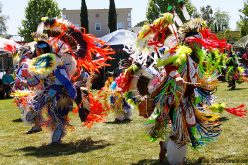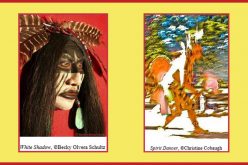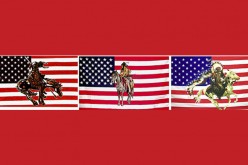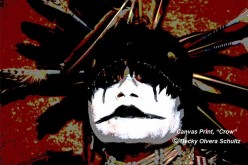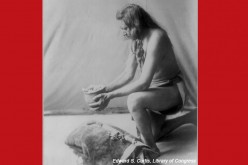California State Parks & Museums Offer Largest Holdings of Indian Culture and Heritage of Any State Agency
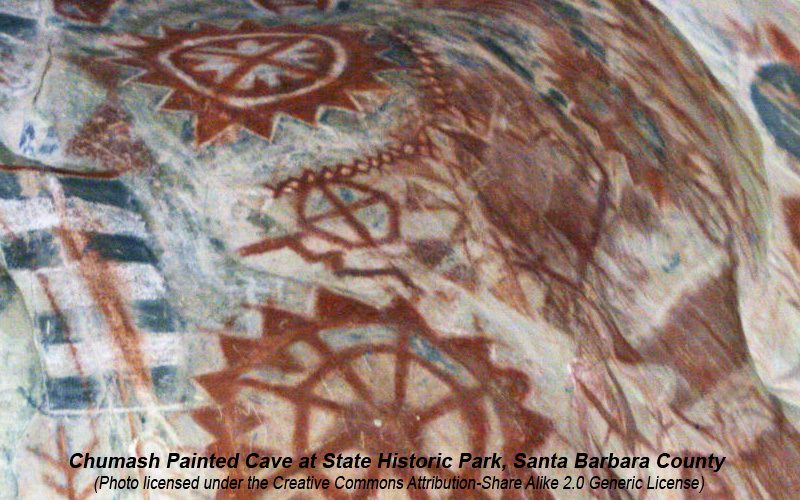
Visit These Parks
California State Parks provide the most diverse and biggest natural and cultural heritage holdings of any state agency in the United States. These parks preserve an unmatched collection of culturally and environmentally sensitive features and ancient habitats, including many noteworthy California Indian villages. You’ll find excellent examples of rock art, sacred sites and cultural preserves belonging to California’s most dynamic heritage. Prior to the arrival of the European settlers in the mid-1700’s, California had more than 300,000 indigenous people living throughout the state.
These parks and museums serve as centers for learning the history, practices and beliefs of California’s Indian people which allow thousands of California school children to experience and acquire an appreciation of the significance of California Indian heritage when visiting these parks and museums. These parks feature representations of these early California societies including rock paintings, ancient village sites, reconstructed dwellings, museum exhibits and much more. Programs and special events are provided by these parks enabling the public to learn about contemporary California Indian culture.
The following parks partner with tribes and Native American organizations to support their culture:
Ahjumawi Lava Springs State Park: Within the park and on nearby stretches of the Tule River and Ja-She Creek are some of the best examples of stone fish traps made by native Ajumawi fishermen. The park contains bedrock mortars, village sites and rock art sites. Fall River Mills, 530-335-2777
Annadel State Park: 5,000 acre park preserves a significant California Indian prehistoric obsidian quarry, industry sites and the most outstanding example of northern oak woodland in existence. Santa Rosa, 707-539-3911
Anderson Marsh State Historic Park: Archaeological sites hold clues to the lives of the Pomo. More than 50 registered California Indian sites, some that are over 6,000 years old. Clear Lake, 707-994-0688
Antelope Valley Indian Museum: https://www.parks.ca.gov/?page_id=632 Interprets the California Indian cultures of the Western Great Basin, East and Southeast of the Sierra Nevada Mountains, including the Kitanemuk, Mojave, Halchidhoma, Quechhan, Kawaiisu, Southern Paiutes, California and Arizona Indian tribes. The AVIM holdings consist of 8,000 Native American artifacts. Lancaster, 661- 942-0662
Anza-Borrego Desert State Park: With over 600,000 acres, this is the largest state park in California (and in the contiguous United States) with 12 wilderness areas and miles of hiking trails. Several interpreted trails in the park provide the visitor with opportunities to visit ancient Cahuilla and Kumeyaay village sites, hunting trails and rock art. There is a California Indian museum in the park that houses valuable artifacts from many of the local Indian tribes. San Diego County, 760-767-5311
Chumash Painted Cave State Historic Park: The sandstone cave houses at this park depict religious drawings by Chumash Native Americans, as well as likenesses of coastal fishermen that date back to the 1600s. Above Santa Barbara in a steep canyon, the site preserves these fine examples of Native American art on the side walls of the rock shelter. The pictographs made by Chumash people in the sandstone cave are some of the best examples of painted rock art in California. San Marcos Pass, 805-733-3713
Clear Lake State Park: This park has a self-guided Indian Nature Trail through the site of what was a former Pomo Indian tribal village. Kelseyville, 707-279-4293
Cuyamaca Rancho State Park: This location was home to Kumeyaay people from prehistoric times into the nineteenth century. The archaeological remains of this occupation are encountered along the park’s many riding and hiking trails. Display of a California Indian residence dating back at 7,000 years and bedrock mortars. Descano, 760-765-0755
Fort Humbolt State Historic Park: Includes interpretive exhibits of the impact miners and settlers had on the Yurok, Karok, Tolowa, Hupa, Wiyot, Wintun, Yuki, and Shasta tribes, and efforts by the army to resolve conflicts. Eureka, 707-445-6567
Indian Grinding Rock State Historic Park: 1,185 granite bedrock mortars, largest collection of mortars in North America. Chaw’se Regional Indian Museum features a variety of exhibits and an outstanding collection of Sierra Nevada Indian artifacts, including those from Northern, Central, and Southern Miwok, Maidu, Konkow, Monache, Nisenan, Tubatulabal, Washo and Foothill Yokut. Includes a Miwok village complete with a roundhouse, bedrock mortars and petroglyphs. Pine Grove, 209-298-7488
Lake Oroville State Recreation Area: Displays of Maidu culture and lifestyle and two audio visual presentations, including “Ishi, The Last Yahi.” There is also a self-guided Nature Trail that explains the use of local plants by the Konkow tribe. Oroville, 530- 538-2200
Lake Perris State Recreation Area: Ya’l Heki’ Regional Indian Museum includes interpretive exhibits of the Mojave Desert group culture of Serrano, Cahuilla, Cupeño, Gabrieleño, Vanyume, Luiseño and Chemehuevi tribes. The name “Ya’l Heki’ ” translated from the Cahuilla language means “Home of the Wind.” Perris, 951-657-0676
La Purísima Mission State Historic Park: Founded in 1787, one of the most completely restored missions of the 21 Spanish missions in California–largest and most authentic mission restoration project in the American West and contains the remains of a reconstructed Indian village. Lompoc, 805-733-3713
Mc Arthur-Burney Memorial Falls State Park: 129-foot Burney Falls, possibly the most beautiful falls in the state and is a sacred area for California Indians. Burney Falls is know as a “power place” by Indians, who saw water as a “supernatural boundary.” Burney Creek originates from the park’s underground springs and flows to Lake Britton, getting larger along the way to the majestic falls. Burney, 530-335-2777
Monterey State Historic Park: The Monterey Museum of the American Indian, located upstairs in the Pacific House of the Monterey SHP, presents beautiful baskets, pottery and other Native American artifacts. Monterey, 831-649-7118
Morro Bay State Park: The “Chumash Garden” is part of the Museum of Natural History located in Morro Bay State Park. Visitors can learn how the Chumash people used native plants of this area in their daily lives. Morro Bay, 805-772-2560. Museum, 805-772-2694
Patrick’s Point State Park: Includes Sumeg Yurok Village with traditional style family houses currently used by Yuroks for education of their youth and to share their culture. In the Yurok language, Sumeg refers to an ancient ceremonial and important gathering place. On the North Coast of California, this area was primarily Yurok Indian Territory with the Wyiot tribe to the south, Tolowa tribe to the north, and the Karuk and Hoopa tribes to the east. Trinidad,
707-677-3570
Salt Point State Park: Salt gathering sites, Kashia Pomo villages and bedrock mortars. Gerstle Cove, 707- 847-3221
Santa Cruz Mission State Historic Park: Circa 1824 row-type housing, the only surviving Indian housing of its type among the California missions. Santa Cruz, 831-429-2850
Sonoma State Historic Park: A series of historic attractions in several locations within the community. The park is comprised of six sites with the “Sonoma Barracks” having valuable interpretation activities of California Indian culture. Sonoma, 707-939-9420
State Indian Museum: Basketry, beadwork, clothing and exhibits about the ongoing traditions of various California Indian tribes; emphasis on Central Valley groups including the Yana, Yokuts Monache, Patwin, Wintu, Maidu, Koncow, Nisenan, Tubatulabal and Nomlaki. There is a special display about “Ishi, Last of the Yahi Indians.” June of each year the museum holds an “Honored Elders” Day when California Elders are recognized for their life long contributions to continuing California Indian culture. Another annual event is “Acorn Day” in October where demonstrations involve making traditional acorn foods. Sacramento, 916-324-0971
Tomo-Kahni State Historic Park: Kawaiisu Native American Village was created as a unit of California State Parks in 1993 to protect and preserve the integrity of the location. Tomo-Kahni, or “Winter Village,” was the site of a Kawaiisu (Nuooah Village). The Kawaiisu migrated from the Great Basin and made Tehachapi their home for two to three thousand years. The Kawaiisu are noted for their finely woven baskets of intricate and colorful design. Aside from the Kawaiisu winter village, there are trails and rock art. Due to the extremely sensitive nature of the site, Tomo-Kahni is available to the public by tour only. Tehachapi Mountains,
661-942-0662
Wassama Round House State Historic Park: Historic site used as a ceremonial meeting placed by California Indians is preserved in this park. In includes a reconstructed “dance house” still used for Miwok and Yohut celebrations. The Round House is open by appointment only, 11 am to 4 pm. Friant, 599- 822-2332
Washoe Meadows State Park: Occupies 620 acres of meadow and woodland in the valley at the base of the escarpment leading to Echo Summit, named for the Native Americans who inhabited the area for thousands of years. South Lake Tahoe, 530-694-2248



